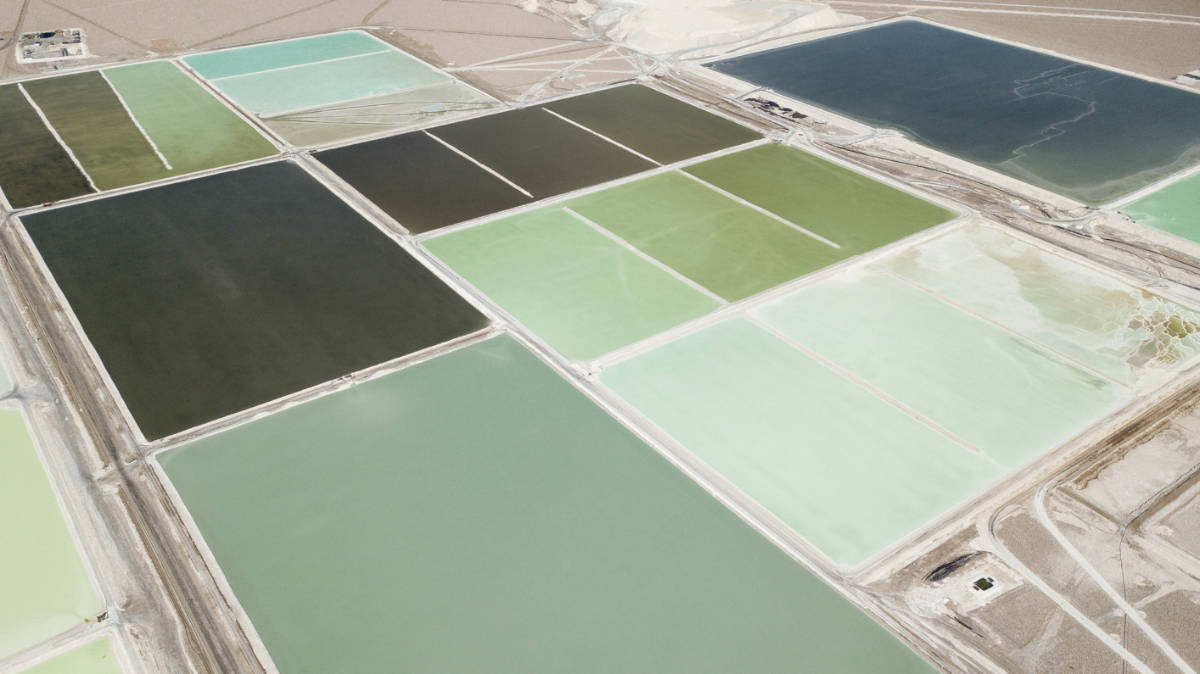DLE: The technologies moving the needle on lithium production

Pic: Getty Images
- Demand for lithium has increased rapidly but there are various issues with traditional methods of production
- There has been significant investment in DLE since as far back as the 1990s
- But not all DLE tech is equal, with some at more advanced stages than others
Experts say direct lithium extraction (DLE) technologies could be the solution the lithium world needs to ease the strain of an oncoming long-term supply shortfall.
Supply may outpace demand in the short run but in the long term, lithium consumption is predicted to reach about 6Mt LCE by 2050, a 400% increase on 2024 numbers (1.2Mt) and a 1466% jump on 2020 numbers (383,000t).
Extracting lithium resources can be time consuming, energy intensive and damaging to the environment, tarnishing the ‘green image’ of electrification technologies (electric vehicles and grid-scale energy storage systems) the mineral is used in.
While startups have pursued DLE for years, the technology has only recently matured to a point at which it can compete with traditional methods of extracting lithium from hard rock resources and brine.
How does DLE work?
Unlike brine evaporation – which can take up to 18 months – DLE can achieve extraction in just hours or days, promising higher recovery rates (90% or more than conventional methods) and a smaller environmental footprint.
Lithium production from brine is dominated by solar/evaporation pond-based forms of extraction.
Edith Cowan University associate professor Amir Razmjou said brine is more attractive as a process than hard rock as lithium is already in an aqueous or water-based solution.
“During this process, brine is pumped into vast ponds and allowed to evaporate until the lithium chloride concentration reaches about 6% – the solution is then treated to remove any remaining magnesium, calcium and boron before being refined into lithium carbonate or hydroxide,” he said.
Extracting lithium from hard rock requires leaching it into water, however, when it comes to DLE, lithium ions are selectively extracted from a brine while leaving most other salts in the brine solution.
The two ‘most advanced’ DLE technologies
The DLE process begins with the collection of lithium-rich brine from underground reservoirs or salars, where it undergoes pre-treatment to remove impurities, Razmjou said.
Various methods are then employed to selectively capture lithium ions from the brine while leaving other ions behind, paving the way for high-purity lithium production.
Following extraction, the captured lithium ions undergo post-treatment to recover them.
While many different methods have been developed, only a few DLE technologies including ion exchange, adsorption, solvent extraction and membranes, have progressed beyond the ‘technology readiness’ level.
And according to Razmjou, ion exchange and adsorption methods stand out as the most advanced.
AZL’s DLE tech
Arizona Lithium (ASX:AZL) owns the Prairie lithium project in the Williston Basin of Saskatchewan, a region historically known for its oil production.
The company runs a proprietary lithium extraction process technology called Prairie Lithium Ion Exchange (PLIX) that selectively extracts lithium from brine.
AZL has been testing its own, as well as third-party extraction methods at the nearby Lithium Research Centre (LRC).
It produced its first battery-grade lithium carbonate in August last year, which was verified by Vancouver-based Saltworks Technology, a specialist in treating wastewater and refining lithium.
The lithium carbonate was produced from DLE eluent as part of a pilot using tech provided by ILiAD Technologies that operated at the Prairie project from November 2023 to February 2024.
AZL CEO Paul Lloyd told Stockhead the brine at Prairie isn’t associated with any significant troublesome impurities, enabling a lower cost processing OPEX.
“DLE requires suitable geology for re-injection, which is a tried and true process across North American oil fields,” he said.
“While DLE technology is being developed and advanced in multiple jurisdictions such as Germany and Arkansas, the infrastructure being proposed for Pad #1 at the Prairie project is anticipated to be one of the first and largest commercial scale DLE operations in an oil field brine.
“It is designed to de-risk the DLE process at commercial scale to enable rapid scale up in production across the project,” he added.
“We’re currently at the pre-FEED stage, with FEED anticipated to kick off in Q1, followed by onsite construction in Q2/Q3 2025 and commissioning in Q4 2025 before production later in the year.
“We’re excited about the ability to rapidly increase production on a modular basis.”
ASX stocks using A-DLE tech
Adsorption DLE (A-DLE) is being deployed at Vulcan Energy Resources’ (ASX:VUL) Lionheart project in Germany.
Its contribution to lithium’s future was brought to light when Rio Tinto (ASX:RIO) revealed its planned $6.7bn takeover of Arcadium, a company that has been deploying DLE tech in Argentina since the 1990s.
The process uses water to recover the lithium from its proprietary sorbent, reducing the need for large-scale evaporation ponds, and rather than use gas to heat the brine, VUL’s process uses geothermal brine that is already naturally heated.
The company produced the first battery quality lithium hydroxide monohydrate (LHM) at its downstream optimisation plant earlier this month, representing the first fully integrated, battery-quality LHM produced in Europe from raw material to final product.
VUL’s product will be used in ongoing qualification processes with its offtakers including Stellantis, Renault, LG and Umicore while the company’s Phase One project is being constructed.
Another company using the ‘adsorption’ method is Anson Resources (ASX:ASN) but where Vulcan uses the technique to extract lithium from geothermal sources, Anson uses it to recover lithium from oil field brines.
Anson has completed a DFS and has tested the purity of lithium battery material at the Paradox lithium project at 99.95 per cent.
It joined forces with China’s Sunresin in 2022 to use its patented DLE tech for production of battery-grade lithium carbonate at the Paradox project, situated within Utah’s Paradox Basin.
At this stage, Anson’s DLE process can recover 91.5 per cent of lithium from the brine but the company believes it can improve that further before going into production in 2026.
At Stockhead we tell it like it is. While Arizona Lithium, Vulcan Energy Resources and Anson Resources are Stockhead advertisers, they did not sponsor this article.
Related Topics

UNLOCK INSIGHTS
Discover the untold stories of emerging ASX stocks.
Daily news and expert analysis, it's free to subscribe.
By proceeding, you confirm you understand that we handle personal information in accordance with our Privacy Policy.








